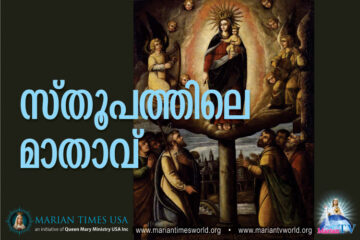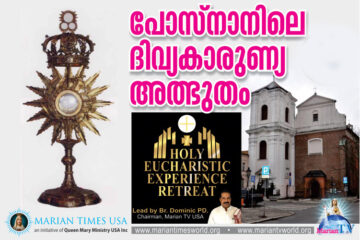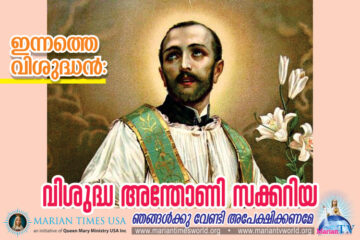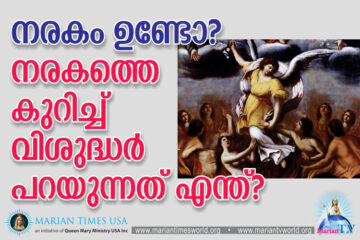RESURRECTION OF JESUS IS OUR GREATEST HOPE! (EASTER SUNDAY HOMILY)

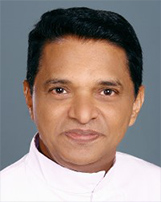
~ Fr. Abraham Mutholath ~
Chicago, USA. ~
EASTER SUNDAY HOMILY
INTRODUCTION
The resurrection of Jesus was pre-planned by God the Father and predicted by Jesus several times during his public ministry. It was on the first day of the week of creation that God brought forth light out of darkness. Jesus who is the Light of the world emerged out of darkness of the grave defeating the sin and Satan on the first day of the week. Christ’s triumph over sin, Satan, and death is our victory because we share in the benefits of Jesus’ triumph. This victory was achieved by the passion and death of Jesus. He has invited us to take up our cross and follow him to join his victory in heaven.
Interpretation
The order of events after the death of Jesus is as follows:
The Burial of Jesus. (Matthew 27:57-61, Mark 15:42-47, Luke 23:50-56, John 19:38-42)
The Guard at the Tomb. (Matthew 27:62-66)
The Resurrection of Jesus. (Matthew 28:1-10, Mark 16:1-8, Luke 24:1-12, John 20:1-10)
The Appearance to Mary Magdalene. (Mark 16:9-11, John 20:11-18)
The Appearance to Two Disciples. (Mark 16:12-13, Luke 24:13-35)
The Appearance to the Disciples in Jerusalem. (Luke 24:36-49, John 20:19-23)
The Report of the Guard. (Matthew 28:11-15)
- The Burial of Jesus. (Matthew 27:57-61, Mark 15:42-47, Luke 23:50-56, John 19:38-42)
An understanding of the burial of Jesus and the subsequent events would help us to understand the resurrection of Jesus. Since the male disciples of Jesus were afraid of the soldiers, they were hiding and could not undertake the burial of Jesus. They also had no money to buy a burial ground and the spices needed for embalming the body of Jesus. Two secret admirers of Jesus emerged to take leadership at the appropriate time. “Joseph of Arimathea, distinguished member of the council, who was himself awaiting the kingdom of God, came and courageously went to Pilate and asked for the body of Jesus.” (Mark 15:43). Nicodemus was a Pharisee and a member of the Sanhedrin who visited Jesus at night (John 3:1–21) and supported Jesus in the Sanhedrin (John 7:50–51). He assisted Joseph of Arimathea in burying Jesus and provided “a mixture of myrrh and aloes weighing about one hundred pounds.” (John 19:39). Joseph of Arimathea gave his own tomb in which no one was buried before, for the burial of Jesus. Joseph and Nicodemus took the body and bound it in linen cloths with the spices according to the Jewish custom and buried in the tomb. All these were done in a hurry because they had to do everything between 3:00 P.M. and 6:00 P.M. on Friday before the start of the Passover Sabbath. “Then he rolled a huge stone across the entrance to the tomb and departed. But Mary Magdalene and the other Mary remained sitting there, facing the tomb.” (Matthew 27:60-61). These two women were aware of the location of Jesus’ tomb.
- The Guard at the Tomb. (Matthew 27:62-66)
There have been honorary guards for a very few deceased prominent persons in the world. However, Jesus was the only person whose tomb was guarded for fear of resurrection or claim for the same. When the chief priests and Pharisees sought permission from Pilate he said, “The guard is yours; go secure it as best you can.” This had an ironical tone because Pilate might have believed in the words of Jesus that he would rise from the dead. He was already dissatisfied with the judgement he had to make out of pressure from them. The Jewish leaders secured the tomb by fixing a seal to the stone and assigning guards.
Where was Jesus while his body was in the grave?
According to the Apostles’ Creed, we profess, “He descended into hell. On the third day he rose again.” Did Jesus really go to hell before his resurrection? According to Ephesians 4:9-10, Jesus “descended into the lower parts of the earth.” The resurrection of Jesus presupposes that he stayed in the realm of the dead prior to his rising from the dead. In 1Peter 3:18-20 we read, “He was put to death in the body, but made alive in the spirit, in which He also went and preached to the spirits in prison.” Jesus descended among the dead who were waiting to enter heaven and proclaimed the Good News that he has going to open the gates of heaven. He did not go to the hell of the damned for their liberation but to “Abraham’s bosom” (Luke 16:19-31) as in the story of the parable of the Rich Man and Lazarus. So “hell” in the Apostles Creed is the Hades where the deceased are deprived of the vision of God and awaiting the victory of the Redeemer. Thus, “The gospel was preached even to the dead.” (1Peter 4:6). The Catechism of the Catholic Church teaches that, “The descent into hell brings the Gospel message of salvation to complete fulfilment.” (484). “He opened heaven’s gates for the just who had gone before him.” (637).
In the funeral chapel of the Church of Chora in Istbabul, Turkey, there is a famous icon called, “The Harrowing of Hell.” It is the depiction of Christ’s descent into hell. In this icon, Jesus is standing over the broken gates of hell, fallen in cross shape over the pit of darkness. The Devil is chained and falling into the pit of darkness. Jesus in his glorious dress is lifting Adam and Eve out of their graves by the wrists because they cannot rise themselves. It shows Jesus as a conqueror and rescuer of humanity represented by the first parents. In that icon, we see kings, prophets and the righteous of Israel, including David, Solomon, Moses, Daniel, Zechariah and John the Baptist standing beside Jesus.
- The Resurrection of Jesus. (Matthew 28:1-10)
Mary Magdalene and the other Mary were witnesses of the crucifixion and burial of Jesus. “The other Mary” was the mother of James the Less and Salome who was the wife of Zebedee, and the mother of James the Elder and John. These two were at the foot of the cross and at the burial time. They stayed at home during the Sabbath hours. After that they bought spices and ointment for the completion of the anointing of Jesus’ body. On Sunday early morning, they went to the tomb of Jesus. They were not practical or experienced in late embalming because they had no idea of how to remove the stone covering the tomb which was sealed and guarded by the temple authorities.
Though purpose of the visit by the women devotees of Jesus was to anoint the body of Jesus, they could not do it because he had already risen from the dead. The body of Jesus was previously anointed by Mary of Bethany when he was alive. According to John 12:1-8, Lazarus and his sisters Martha and Mary gave a supper for Jesus six days before the last Passover Jesus celebrated. During the dinner, “Mary took a liter of costly perfumed oil made from genuine aromatic nard and anointed the feet of Jesus and dried them with her hair.” (vs. 3). When Judas Iscariot questioned, “Why was this oil not sold for three hundred days’ wages and given to the poor?” (vs. 5), Jesus said, “Leave her alone. Let her keep this for the day of my burial.” (vs. 7). Jesus was aware that anointing of his body would not be completed after his death.
Evangelist Matthew reports that there was an earthquake before the two women arrived at the empty tomb of Jesus. It could be an aftershock of the earthquake on Friday when Jesus died. However, the stone covering the tomb of Jesus was rolled back not by the earthquake but by an angel of the Lord who descended from heaven and was seen sitting on the stone. Besides the temple guards, God had assigned angels as honorary guards to the holy sepulcher and to announce the good news of the resurrection of Jesus to the visitors there. They also kept the tomb opened for the visitors to witness the empty tomb. For Jesus, there was no need of opening the tomb because he came out with a transformed body that could pass through the walls.
In fact, a group of women arrived at the tomb of Jesus though two of them arrived at first. According to Luke, “The women were Mary Magdalene, Joanna, and Mary the mother of James; the others who accompanied them.” (Luke 24:10).
The angel of the Lord was visible as “a young man clothed in a white robe” (Mark 16:5) or “two men in dazzling garments” (Luke 24:4). The angel was God’s answer to their question among themselves: “Who will roll back the stone for us from the entrance to the tomb?” (Mark 16:3). The women could not open the tomb by themselves. The name of the angel is not given. The guess is that it must be Angel Gabriel who had been communicating several times related to the incarnation of Christ. However, Luke mentions the appreance of two angels. (Luke 24:4). Angels were present during the important events of Jesus’ life like his birth, at the end of his temptation, at the Garden of Gethsemane, and finally at the time of his resurrection. At the empty tomb, there might have been many angels present; but only one or two were visible.
According to Matthew, the angel’s “appearance was like lightning and his clothing was white as snow.” (Matthew 28:3). When Prophet Daniel had a vision of an angel, “his face shone like lightning. (Daniel 10:6). This angel on the stone had similar appearance. During the transfiguration of Jesus, “His clothes became dazzling white, whiter than anyone in the world could bleach them.” (Mark 9:3).
The women might have seen the guards “shaken with fear of him and became like dead men.” (Matthew 28:4). The fear of the guards was caused by the extraordinary scenes and the angel of the Lord. They might have fainted and fell to the ground and seemed like dead people before they left the place with terror.
The women did not ask the angel anything. The angel could guess their inner thoughts from their reaction as they saw the empty tomb, the terrified soldiers, and the angel. So, the angel said, “Do not be afraid! I know that you are seeking Jesus the crucified. He is not here, for he has been raised just as he said. Come and see the place where he lay.” (Matthew 28:5-6). Just as Jesus’ birth was announced by angels in the field of Bethlehem, his resurrection was also announced in the garden where the tomb stood. Though the women were afraid of the scene, unlike the guards, they were friends of Jesus and they had nothing to fear according to the angel.
Angel invited the ladies to see for themselves the empty tomb which they had seen on Friday. In Luke’s account, the angel asked them: “Why do you seek the living one among the dead?” and reminded them of the prophecy of Jesus on his resurrection. (Luke 24:5-7). After inspecting the tomb and its contents, the angel commissioned them to communicate the good news to the disciples of Jesus and Peter (Mark 16:7). Peter’s name is specially mentioned because he was the leader of the team as well as to pacify him from his guilt feeling of denying Jesus three times during the trial.
The women including Mary Magdalene, Mary the mother of James, Joanna, and the others who accompanied them by this time met the eleven apostles and announced the good news of the resurrection of the Lord. “But their story seemed like nonsense and they did not believe them.” (Luke 24:11). However, Peter and John ran to the tomb to verify what the women said. Since John who was younger than Peter, John reached the tomb first. He waited for Peter to go in first. They identified the burial cloths in the tomb and believed in the resurrection. According to the Jewish law, the witness of two people was enough to ascertain a truth. Stealing the body was not a possibility because the thieves won’t get enough time to unwrap the burial clothes that were wrapped several rounds on the corpse. Besides, the napkin that covered the face was folded which won’t be a normal action of stealers who act in a hurry. The resurrection was later confirmed by the appearance of Jesus to the disciples and even eating with them.
- The Appearance to Mary Magdalene. (Matthew 28:8-10, Mark 16:9-11, John 20:11-18)
According to Matthew, while the women ran with fear and joy, they met Jesus on the way. Jesus also commissioned them to communicate the good news to his disciples. Mary, out of whom Jesus had driven out seven demons, was the privileged one to see the Risen Lord first according to St. Mark. (Mark 16:9).
Unlike Matthew and Mark, John gives a different version of how the Risen Lord appeared to Mary Magdalene. When Mary had noticed that the stone covering the tomb was removed, she went and reported that to Simon Peter and John. They hurried to the tomb and saw the empty tomb with the burial clothes and returned from there. Mary Magdalene who was following them to the tomb stayed there. Then she “saw two angels in white sitting there, one at the head and one at the feet where the body of Jesus had been.” (John 20:12). While she was talking to the angels, Jesus appeared behind her. Probably because of her tears she could not recognize Jesus and she thought that it was the gardener. However, when Jesus called her by name, she recognized him. As per instruction from the Risen Lord, she went to the disciples of Jesus whom he qualified as “my brothers” and informed him what Jesus told her.
- The Appearance to Two Disciples. (Mark 16:12-13, Luke 24:13-35)
Jesus appeared to two disciples who were traveling from Jerusalem to Emmaus and explained to them “beginning with Moses and all the prophets, he interpreted to them what referred to him in all the scriptures.” (Luke 24:27). They did not recognize Jesus until “he took bread, said the blessing, broke it, and gave it to them” while they were at supper. (Luke 24:30). They went back to Jerusalem and shared with the other disciples their experience.
- The Appearance to the Disciples in Jerusalem. (Luke 24:36-49, John 20:19-23)
On the same evening when Jesus resurrected, he appeared to the disciples in a locked room. He gave them power to absolve sins and commissioned them to preach the gospel.
- The Report of the Guards. (Matthew 28:11-15)
Matthew reports a story of the guards who witnessed the resurrection of Jesus. They told the chief priests all that happened. The chief priests in consultation with the elders “gave a large sum of money to the soldiers, telling them, ‘You are to say, ‘His disciples came by night and stole him while we were asleep.’” The soldiers accepted the money and followed their directives. Instead of becoming believers, the soldiers betrayed Jesus like Judas for material benefits. They chief priests and elders who got the final proof of Jesus as the Messiah, tried to hide it from public. That also became another supporting evidence for the resurrection of Jesus.
Message:
- An achievement of the head of the family is also the accomplishment of the family members. So also, the victory of Jesus over death and sin is our victory also. Let us follow his victorious path by taking up our cross with faith and commitment.2. Though the apostles of Jesus were men, the women disciples of Jesus were courageous and supportive of Jesus at his crucifixion, burial and even afterwards. Women have a prominent service role in the church.3. The prominent Jewish leaders, Joseph of Arimathea and Nicodemus were afraid to support Jesus in public. However, they emerged with their great service and offers after the death of Jesus. Let us be beneficial to others when they are alive also.4. The soldiers who guarded the tomb of Jesus were the only direct witnesses of the resurrection of Jesus. They failed to believe in Jesus and get the salvation. Instead, they preferred money like Judas. What do we prefer in our life?5. At the birth of Jesus, the scribes and other religious leaders who confirmed with King Herod the birthplace of Jesus as Bethlehem failed to welcome the Messiah. So also, the High Priests and elders who met after the true witness of the soldiers did not accept Jesus as the Messiah but tried to hide the truth. Do we ignore the truth that God reveals to us and go after selfish goals?



